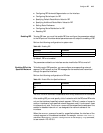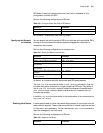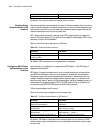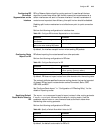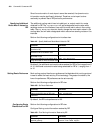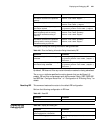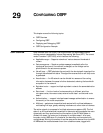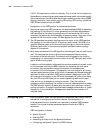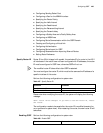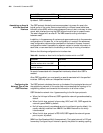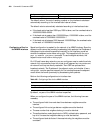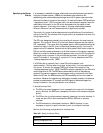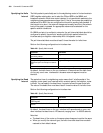
29
CONFIGURING OSPF
This chapter covers the following topics:
■ OSPF Overview
■ Configuring OSPF
■ Displaying and Debugging OSPF
■ OSPF Configuration Example
OSPF Overview Open Shortest Path First (OSPF) is an autonomous, link-state-based internal
routing protocol developed by Internet Engineering Task Force (IETF). The current
version is version 2 (RFC1583), which features the following:
■ Applicable range — Supports networks of various sizes and hundreds of
routers.
■ Fast convergence — Sends an update message immediately after the
topological structure of the network is changed, so the change can be
synchronized in the autonomous system.
■ No self-loop — OSPF calculates the route with the shortest path tree algorithm
through the collected link status. This algorithm ensures that no self-loop route
is generated.
■ Area division — An AS network can be divided into areas and the routing
information between the areas is further abstracted, reducing the bandwidth
occupation in the network.
■ Equivalent route ----support multiple equivalent routes to the same destination
address.
■ Route level --- the four levels of routes according to different priorities:
intra-area routes, inter-area routes, external route class 1 and external route
class 2.
■ Authentication ---- support interface-based message authentication to ensure
the security of the route computation.
■ Multicast ---packets are transmitted and received with multicast address on
multicasting link layer, greatly reducing interference to other netw ork devices.
The entire network is composed of multiple autonomous systems (AS). The link
state of an AS is collected and transmitted to determine and propagate the route
dynamically and then synchronize the information of the AS. Each system is
divided into areas. If a router port is allocated to multiple areas, it is an area
boundary router (ABR) since it is located at the boundary and connected with
multiple areas. Routing information of another area can be learned from the ABR.
All ABRs and the routers between them form a backbone area, tagged with



